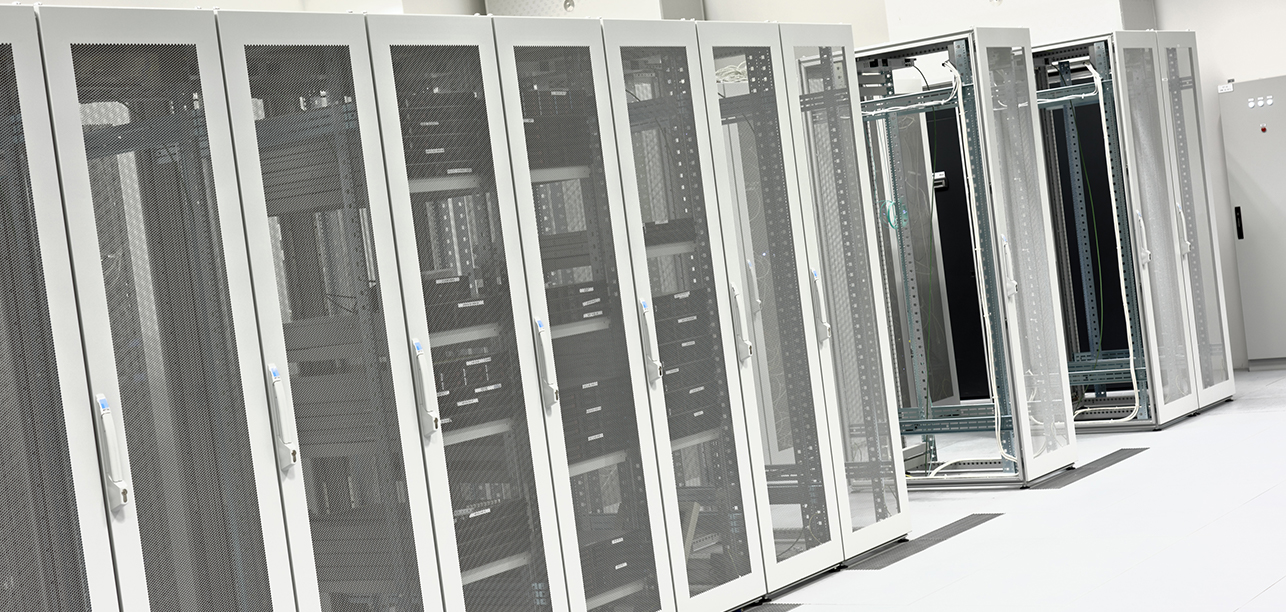Month: May 2013

Industry news: colocation, cloud and managed hosting services create strategic IT opportunities
What are the latest cloud-related trends in the information technology space? The impact of cloud computing on the IT industry has changed the way that CIOs and IT leaders think about business operations.
With so much information available on the topic, here are four articles that provide a glimpse into the current industry trends for cloud hosting services, colocation and managed hosting.
Gartner: Cloud computing makes IT strategically valuable
The rise of cloud computing has created opportunities for IT to become more strategically valuable to the organization. Businesses that depend heavily on the cloud become more reliant on IT to provide oversight and governance for their cloud strategies.
Colocation, managed and cloud hosting can pay off as companies focus on IT
The prevalence of cloud computing and virtualization have pushed IT leaders into a more strategic role, but these technologies have also put more stress on the network. As web systems and data protection become business-critical, IT and business leaders have an opportunity to benefit from colocation, managed hosting and cloud hosting services.
Cloud hosting offers scalability and cost efficiency that can be tough to match
Scalability is a major challenge for companies maintaining websites. The ability to scale up and down based on demand creates an environment in which organizations never waste money. Cloud hosting offers the ability to pay as you go, whereas with traditional hosting solutions, companies pay for resources regardless of usage.
Colocation hosting can help companies handle common data center problems
Colocation hosting gives organizations the freedom to develop scalable, adaptable data center configurations. In the event of a disaster, a third-party facility helps safeguard personnel by providing a backup instance of the data center, making disaster recovery efforts easier and allowing companies to focus on taking care of their employees.
Explore HorizonIQ
Bare Metal
LEARN MORE
Stay Connected

 The Digital Hollywood event in Los Angeles earlier this month brought together content providers and technology companies from around the country to discuss the future of digital content distribution and licensing. As expected, the business of content creation and publication has progressed at breakneck speed in recent years, and as a result, the Digital Hollywood conference has evolved from a “dreams and ideas” workshop into a forum for strategic business and licensing discussions.
The Digital Hollywood event in Los Angeles earlier this month brought together content providers and technology companies from around the country to discuss the future of digital content distribution and licensing. As expected, the business of content creation and publication has progressed at breakneck speed in recent years, and as a result, the Digital Hollywood conference has evolved from a “dreams and ideas” workshop into a forum for strategic business and licensing discussions.
The evolution of content distribution
In addition to focusing on the creative side of their brains, content creators must now increase their knowledge of the business side of content delivery. Dreams and ideas that once only existed in theory are now a reality, and learning about digital content distribution strategies – what’s working and what’s not – is critical for the success of any content publisher. Since seemingly everyone has the power to create content today, the barrier to entry into the media and entertainment industry is significantly lower than before. But before setting your sights on creating the next online hit drama series, you need to decide the right content delivery method for your masterpiece.
Content licensing and rights management
With the high consumer demand for digital content and the subsequent high revenue potential, ISPs/IPs, content aggregators and content owners are all trying to protect their interests, and this has pushed distribution and license management to the forefront. While your newest video creation may be fantastic, no one will see it without the right distribution channels in place, which may also include digital rights management (DRM) to control any royalties associated with your creation. Successful content distribution also requires you to understand your rights for other types of distribution. More content owners are choosing to do their own delivery via pubic cloud and Content Delivery Network (CDN) infrastructure rather than sign their rights away.
The Digital Hollywood event has become a conduit for the business of content delivery over the internet as opposed to a forum for discussing ideas. With the rise of tablets and smartphones fueling the rapid increase in digital media consumption, content creators have more opportunity than ever. But knowing the business of content delivery has become just as important as the content itself.
Explore HorizonIQ
Bare Metal
LEARN MORE
Stay Connected

Bare metal cloud has helped Hi-Rez Studios achieve higher economic efficiencies and superior online gaming performance.
Have you ever wondered how online gaming companies meet end user demands for high performance and low latency? Fast-paced MMOGs have unique challenges regarding IT Infrastructure, and providing an exceptional user experience is critical. During a global launch, your new game could see a huge influx of users, and providing a high-quality gaming experience depends largely on scalability and performance.
As the winner of the Technology Association of Georgia’s 2012 Excalibur Award, Hi-Rez Studios uses Internap’s bare-metal cloud to efficiently achieve an exceptional user experience. Located just outside Atlanta, Hi-Rez requires a scalable, secure and reliable technology platform to support their growing needs. Successful online gaming infrastructure is composed of several factors, including low latency, the best network and the most efficient route.
Explore HorizonIQ
Bare Metal
LEARN MORE
Stay Connected

Data center disaster preparedness: mock disaster drills – part 3 (video)
In our previous video on data center disaster preparedness, we discussed the importance of documented emergency response plans. Next, it’s time to test those plans and make sure they do more than just look good on paper – they need to be reliable and executable in the event of a real disaster.
While anyone can go through the steps on a piece of paper, conducting real-time drills is the only way to see how your people respond under pressure. Throw every possible scenario at your operations teams – weather-related events, equipment failures, utility grid failures – this will show you the true nature and knowledge of your resources, and how they will behave under stress.
Testing your plan and going through real-time exercises is the best way to strengthen your plan and prepare your team to handle an actual event. Remember, the purpose of these tests is to identify gaps and make your plan stronger. If you’re not finding problems when doing these drills, you’re not testing hard enough.
Next week’s video will focus on preventative maintenance as part of a strong data center disaster preparedness plan.
Explore HorizonIQ
Bare Metal
LEARN MORE
Stay Connected

The amount of data collected at every part of the supply chain has steadily increased, enabling retailers to make extremely informed decisions about what to sell, when to sell it and who to sell it to. The science of collecting these vast amounts of data and trying to draw meaningful conclusions falls under the term “big data.” This vast amount of information quickly becomes complex, unruly and difficult to store; and it’s nearly impossible to extract meaningful insight using traditional databases and computational techniques. The ability to compare Apple iPads to orange t-shirts in a meaningful way is a recent development, and this kind of knowledge is more than power – it’s profit.
Fifty years ago, if you walked into a local retailer to purchase a record player and a copy of Please Please Me, the debut album of a then-unknown band from England, you would have simply walked up to the register with your items, paid the cashier, received a receipt and been on your way (to having your musical world turned upside down, but that’s outside the scope of this blog post). Once a month, every store employee would stay late to manually look through every item on the shelves to take inventory.
Twenty years ago, if you walked into a local retailer to purchase a cassette player and a copy of The Cranberries’ debut album Everybody Else Is Doing It, So Why Can’t We?, you would have walked up to the register, paid the cashier, the now-computerized register would have automatically removed the items from the store’s inventory system, you’d be furnished with an itemized receipt, and you’d be on your way in record time. At the end of each week, the store’s computer would provide the manager with a report showing current inventory levels along with statistics on what was sold during the week. The manager would use that basic data to make informed decisions about what to order and when to order it.
Ten years ago, if you walked into a local retailer to purchase a CD player and a copy of The Strokes’ Room on Fire, you would walk up to the register, the cashier would scan your items and a prompt would pop up on their screen suggesting that perhaps you might want to preorder Radiohead’s upcoming album, Hail To The Thief. You’d ponder for a moment and remember that you used to enjoy Radiohead, so you add it to your order, pay the cashier, get your itemized receipt and preorder voucher, and leave the store, not only excited about your current purchase, but rife with anticipation for the new Radiohead album. At the end of the week, the store’s computer system would automatically place an order to replenish stock on items that were sold, and your preorder would be secured along with those of 50 other patrons – 30 of whom, like you, had entered the store unaware that Radiohead had a new album coming out.
Today, thanks to big data and predictive analytics, retailers like Walmart know what their consumers are going to buy before they even enter the store. When it rains on a Sunday in San Diego California, Walmart knows that on the following Monday they’re going to sell three times as many iPods than normal. They can even identify specific genres of music that will see a temporary boost in sales. Does your business have the ability to translate this big data knowledge into profit?
Explore HorizonIQ
Bare Metal
LEARN MORE
Stay Connected

Hosting MySQL’s tips: Error 28 from Storage Engine
If you have any experience with hosting MySQL systems you have probably come across the following error. Here are some tips on how to fix it.
Error 28 is a common error message from your MySQL storage engine. This message indicates that the drive is full, meaning that one or more of the partitions on your server is out of space, and MySQL cannot write to the disk. You need to clear disk space for MySQL to operate. Note that, if you have a dedicated server, you may receive this error even if your control panel still shows free space. (For example, cPanel does not include the database disk space used. It just calculates the disk space of /home/cPanel_username (root directory) for the account.)
Often, the problem can be solved by cleaning up your /tmp directory, which can be overfilled with unnecessary files, like older backups from a scheduled backup script.
Tip 1: First, stop MySQL immediately
On cpanel the /tmp directory is an image created on the / drive so removing files from it won’t help…
Some places worth checking on cpanel is the domlogs if they do not need stats or /home/cpbackuptmp as it is a temporary directory for backups so long as backups are not currently running. Also to check their actual backups and if they are on the same drive that they aren’t keeping too much retention vs available size on their drive, i.e., if they have a 250gb drive and /home & /var/lib/mysql are 80gb keeping a daily & weekly will fill up the drive every time backups run.
Tip 2: Restart MySQL
# /etc/init.d/mysql start
If your /tmp directory is not causing the error, you may also need to look into your /var/log directory and remove or compress the logs.
Additionally, periodically optimizing your tables in MySQLcheck improves database performance. Optimizing is a similar process to defragmentation.
mysqlcheck –all-databases –analyze –optimize -u root -p
Tip 3: Repair all tables in your database
mysqlcheck --all-databases --auto-repair -u root -p
Analyzing, optimizing, and repairing tables can also easily be scheduled as a cron job.
In PHPMyAdmin, table optimization is done by cleaning up table overhead. Overhead is similar to hard drive defragmentation—database tables that are frequently accessed or updated store extra file size, called “Overhead,†that can take up a lot of space over time and requires maintenance. To clear this space, login to PHPMyAdmin, select the applicable database, and you should see a list of all the tables in the database.
In the far right column, note the heading “Overhead.†Check all the tables that have an “Overhead†value listed. At the bottom of the window, you’ll find a drop-down menu. Choose “Optimize Table†from the menu. Overhead will be cleared, and if you click on the database name again, you’ll see all €œOverhead†values should be cleared.
Hope this helps anyone out there looking to solve issues with their hosted Mysql setup.
Explore HorizonIQ
Bare Metal
LEARN MORE
Stay Connected

Just over ten months ago, my wife called me from home with eight used pregnancy tests staring at her from the bathroom trash can. Without hesitation, she uttered, “I’m pregnant.” My first words were every man’s first words in that situation upon hearing this unexpected news – “you’re what?” A weird concoction of excitement and fear pulsated within me as one thought continuously raced through my mind – “Oh (expletive). I’m gonna be a father.”
Luckily for my wife and I, parenthood didn’t start overnight. We had nine months to prepare for a drastic change in our lives. But unfortunately, the same does not apply to your business. Unexpected events won’t give you a call to let you know when they’ll arrive. So when disaster strikes –- and it will –- is your data center provider prepared? If your answer begins with “um” then you need to continue reading this blog.
Hurricanes, tornadoes, floods and more all threaten your data center, which is why it is imperative that your data center provider is prepared to handle any event that threatens disruption to your critical business operations.
Here at Internap, we have created an eBook on the six essential keys to disaster preparedness that you should look for in a data center provider:
- Disaster-resistant design & infrastructure
- Documented response plans
- Mock disaster drills
- Preventative maintenance
- Communication best practices
- The right people
These six factors are crucial for any data center provider that wants to be prepared for unexpected emergencies.
Unfortunately for me, Internap has yet to develop an eBook on Daddy Preparedness. If they had, I would have been more prepared for explosive diapers and lack of sleep.
Maybe, just maybe, with enough parental responses to this blog, Internap may one day compose a guide on how to prepare for fatherhood. And with me only being four weeks into it, I need all the guidance I can get.
Explore HorizonIQ
Bare Metal
LEARN MORE
Stay Connected

Internap’s Agile Hosting service was named a Finalist in the 2013 American Business Awards and will ultimately be a Gold, Silver, or Bronze Stevie® Award winner. Internap was nominated in the category of Best New Product or Service of the Year for Cloud Infrastructure.
The American Business Awards are the nation’s premier business awards program. All organizations operating in the U.S.A. are eligible to submit nominations – public and private, for-profit and non-profit, large and small.
With Internap’s high-performance Agile Hosting services, organizations can instantly customize and provision both physical and virtual IT Infrastructure across a global footprint with a dynamic online configurator. Increased levels of flexibility and control help companies of all sizes meet diverse and rapidly changing workload and application demands. This is especially helpful for companies in the online gaming industry that need to provision new servers for development and testing purposes.
The American Business Awards will be presented at two awards events: the ABA’s traditional banquet on Monday, June 17 – in Chicago for the first time, after 10 years in New York; and the new product & technology awards event on Monday, September 16 in San Francisco.
More than 3,200 nominations from organizations of all sizes and in virtually every industry were submitted this year for consideration in a wide range of categories, including Most Innovative Company of the Year, Management Team of the Year, Best New Product or Service of the Year, Corporate Social Responsibility Program of the Year, and Executive of the Year, among others. Internap is nominated in the New Product or Service of the Year category for Cloud Infrastructure.
Finalists were chosen by more than 140 business professionals nationwide during preliminary judging in April and May. More than 150 members of 10 specialized judging committees will determine Stevie Award placements from among the Finalists during final judging, to take place May 13 – 24.
Explore HorizonIQ
Bare Metal
LEARN MORE
Stay Connected

Data center disaster preparedness: documented emergency plans – part 2 (video)
Watch Bill Brown, VP, Data Center Operations at Internap, discuss the keys to data center disaster preparedness and the importance of having a documented emergency response plan.
When considering a colocation provider, be sure to ask for a written copy of their emergency and disaster response plan. The plan should provide details of preparation in case of an event. For example, in a weather related emergency, Internap enacts our response plan 96 hours in advance. This involves bringing in additional staff, supplies and conducting drills to make sure we have all the resources and people required for the situation. At Internap, we have our documented response plans on file and are more than willing to share with you.
Review your plan regularly
To keep your disaster plan strong, it should be reviewed and updated regularly. Problems should be identified, and the plan should be strengthened based on your findings. Internap updates our plan a few times a year to make sure it’s current. We also provide training for our employees on a semiannual basis so that we are well-prepared with a documented plan in case we have to react to an emergency.
In our previous video, Bill Brown discussed the importance of disaster-resistant design and infrastructure. Next week’s video will focus on having mock disaster drills as part of a strong data center disaster preparedness plan.
Explore HorizonIQ
Bare Metal
LEARN MORE
Stay Connected

 If your office is like any other these days, then Scandal mania has taken over conversations around the proverbial water cooler. Shonda Rhimes’ latest hit drama is all the rage, and it can best be described as Washington intrigue meets spy thriller meets epic romance with tragedy written all over it. I, too, am engrossed by the intricately-woven storyline, and above all, by the deeply flawed characters that Shonda creates for us to love and hate all at the same time. I’ll be honest, Scandal had me hooked at the first episode with the line, “I want to be a gladiator in a suit!”
If your office is like any other these days, then Scandal mania has taken over conversations around the proverbial water cooler. Shonda Rhimes’ latest hit drama is all the rage, and it can best be described as Washington intrigue meets spy thriller meets epic romance with tragedy written all over it. I, too, am engrossed by the intricately-woven storyline, and above all, by the deeply flawed characters that Shonda creates for us to love and hate all at the same time. I’ll be honest, Scandal had me hooked at the first episode with the line, “I want to be a gladiator in a suit!”
I like to believe that the story is not outlandish at all – that it could in fact happen and probably has happened. Maybe not during one administration as depicted in the show, but sprinkled across a wide variety of presidencies notorious in their own right. Some of the hints are too obvious to ignore!
But as someone who works in the Information Technology industry – I also at times can’t help be a bit circumspect about the way IT is depicted on the show. Penetrating firewalls to obtain bank records, Pentagon secrets or health information? No problem. Finding unlisted cell phone numbers and personal call history? Easy. Cracking encrypted online codes? Done.
So the question becomes, are these things really possible? Is our data truly this easy to steal and analyze? Will the entire story of our lives eventually be told in digital code? Or is this simply good story telling? Well, if I believe the premise of the overall story line, then I have to believe that these IT tricks and hijinks are possible. And if not today, surely a group of tricky hackers – er, gladiators – will figure it out in the near future.
At Internap, I think we have some pretty talented IT gladiators on our own payroll. So Shonda – if you ever need any consulting for an episode – we’ve got you covered. Until then, we will anticipate each episode with much intensity and then recap, analyze and revel around the water cooler the next day.
Internap – IT Gladiators for Hire.






